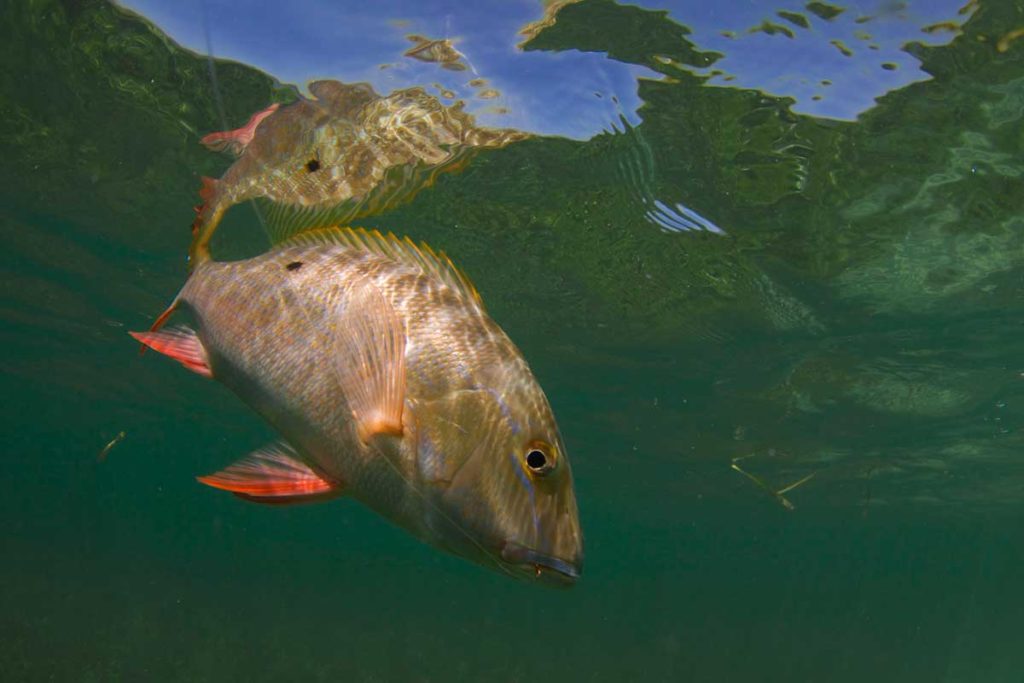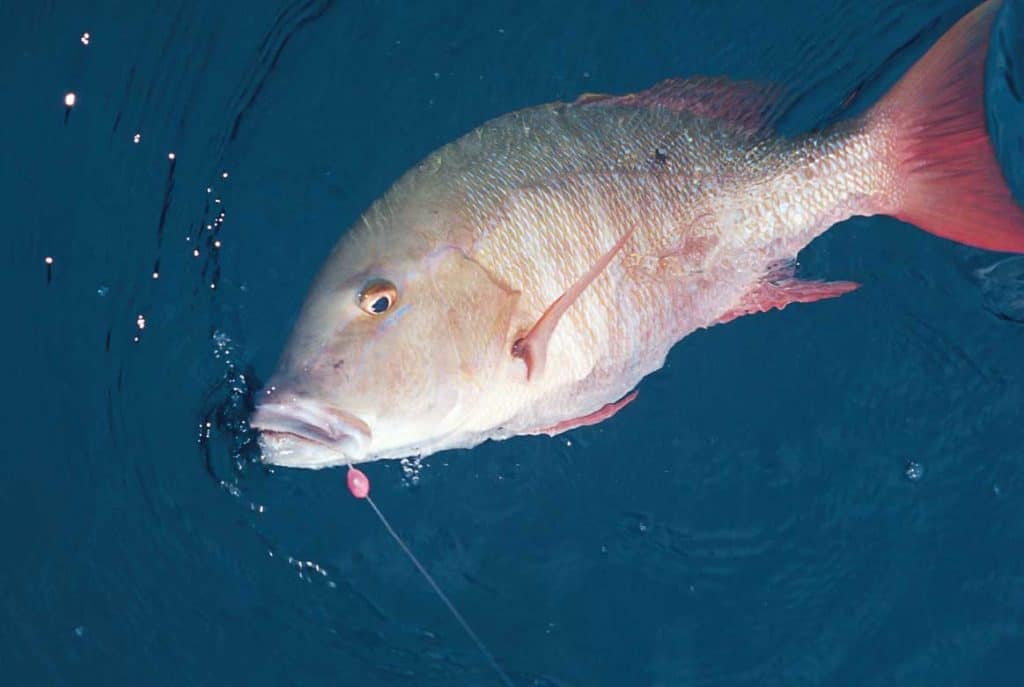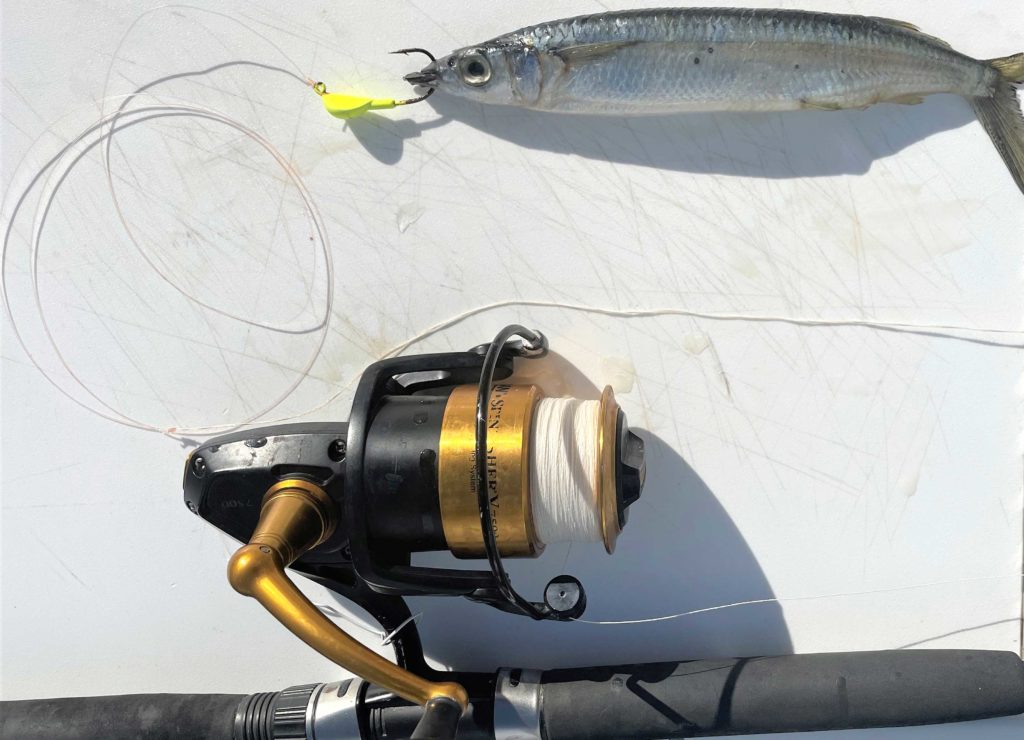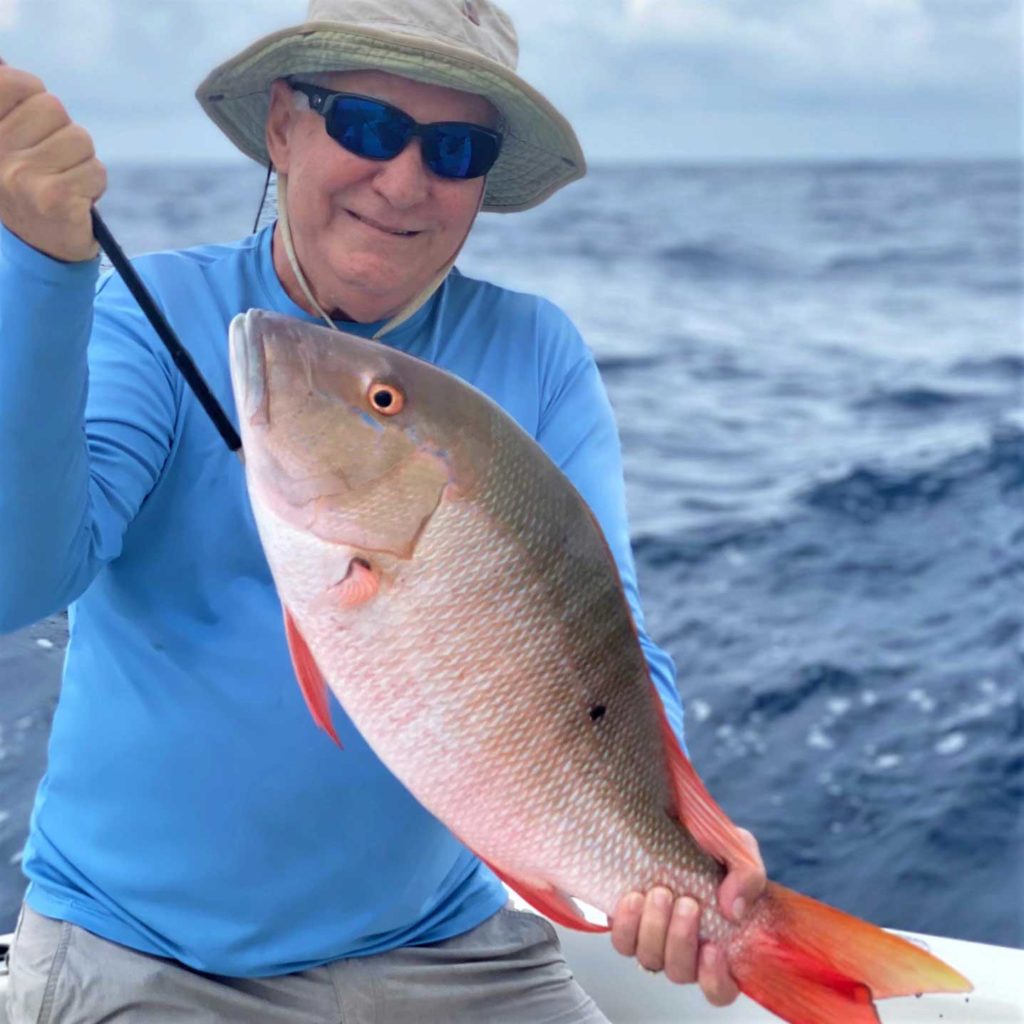
The first cold front of the fall swept across South Florida; a few days later, Capt. Abie Raymond promised me and my buddy a mutton snapper bite.
We departed Miami Beach’s Haulover Inlet in Raymond’s 28-foot C-Hawk, running south toward Key Biscayne. He saw ballyhoo showering, so we made our first stop.
With several dozen liveys in the well, Raymond motored to a nearby patch reef in 18 feet of water, dropped the anchor and put out a chum bag. He deployed two of the live ballyhoo on 20-pound spinning outfits and set the rods into holders. While we waited, he baited some lighter spinning rods with ballyhoo strips and drifted those back into the chum slick for yellowtail snapper.
Shallow Mutton Snapper
We were so busy having fun with the yellowtails that, at first, we didn’t notice the bent mutton rod. Raymond quickly swapped outfits with my buddy, who now had a serious fish fight on his hands. The captain suggested he avoid pumping and winding the fish, because it attracts more shark and barracuda attacks.
While my companion was delighted with his 8-pound mutton, I was surprised that we’d caught such a nice fish in such shallow water. But Raymond is among the handful of locals who knows how good the post-cold-front fishing can be on patch reefs from September through November.

During those times, a major migration of ballyhoo clusters around those reefs. In addition, water clarity diminishes, caused by the wind-churned waves. “When you get a northwest wind, a little cold-front wind, and you get that north swell that creeps down and splits the gap between the coast of Florida and the Bahamas and agitates the bottom, all the way in to the first reef especially, you’ll get this milky water in there,” he says. “It’s just sediment in the water, and it makes the ballyhoo so much easier for the muttons to catch. Once that water gets dirty, they can ambush them way easier.”
Raymond typically has the patch reefs to himself because so few anglers know about that shallow-water fishery. When ballyhoo jump out of the water, chased by snapper as well as sailfish and dolphin, “most people just run right past that stuff,” he says. “It’s usually happening in 20 to 60 feet of water and most people think that’s probably bonitos in there, or mackerel. Not that time of year. Most of the big muttons I caught last year were in less than 70 feet of water in October and November.”
Catching Ballyhoo
When those “sediment days” occur, Raymond looks for showering ballyhoo to load the well. He anchors near a patch reef in 20 feet or ties up to a mooring ball and puts a block of frozen menhaden chum in a fine-mesh chum bag so as not to overfeed the ballyhoo.
He employs several methods to capture the baitfish. Using a Shakespeare Ugly Stick rod with a 2500 Penn Spinfisher reel and 8-pound monofilament, he ties on a tiny No. 20 gold hook baited with an even tinier piece of frozen shrimp. He floats the shrimp back to the baitfish, which pick the offering off the surface. With a de-hooker, he can drop the ballyhoo into the livewell without touching the delicate baitfish.

Catching ballyhoo in a hoop net takes less time. After ballyhoo appear in the chum slick, which usually takes 10 to 20 minutes, he deploys the circular hoop net with an empty water bottle at its bottom so it doesn’t sink. When the net drifts behind the baitfish, he tugs on the lines attached to the hoop, which spooks the ballyhoo into the net.
Raymond also throws a cast net with 1/4-inch mesh— bigger mesh can scrape the scales off ballyhoo—and notes that the quicker you put the baitfish in the livewell, the longer they live. “If you get them in the well pretty quickly, they’ll live six hours,” he explains. “If you catch them on hook and line, they’ll live overnight.”
Tackle and Tactics
With plenty of bait, Raymond looks for patch reefs in 10 to 30 feet of water from Cape Florida in Key Biscayne to North Key Largo. He anchors and deploys the same ground menhaden in a chum bag with larger mesh.
He rigs two ballyhoo, hooked on 1/2- or 3/4-ounce jigs. Raymond prefers Hookup Lures jigs; chartreuse is his favorite color, but he also uses pink or white jigheads.
Some anglers also do well using Troll Rite jigs.
Raymond breaks off the ballyhoo’s bill with an upward snap and runs the jig hook through both of the bait’s lips and through the front of its skull to keep the hook in place.

He fishes the ballyhoo on 7-foot, 20-pound Ugly Stick rods with 7500 Penn Spinfisher reels, spooled with 20-pound mono and 4-foot, 30-pound fluorocarbon leaders. (The dirty water and light mono allow him to use shorter leaders compared with anglers who use 30-foot leaders for wary muttons in deeper water.) Raymond ties a four-wrap spider hitch in the main line and attaches that to the leader with an eight-wrap no-name or Yucatan knot. He attaches the jigs with an improved clinch knot.
Read Next: Fishing in the Florida Keys All Year Long
He deploys one bait on either side of the boat, and unless he has patient anglers, he leaves the mutton outfits in the rod holders. “They need to be real still,” he explains. “Customers tend to want to wind and wind and wind. The rod holder doesn’t have that tendency.”
It takes patience to let the chum attract the snapper. As Raymond notes, “The longer you can sit on one of those patch reefs and wait to get a quality fish or two, the better.
“If you can allocate about two hours at one patch reef and let that chum really get established and let those fish really settle in and come running from all the other patch reefs, a lot of times you’ll do better. If you don’t have current, you give it half an hour, 40 minutes and you move on to the next one.”








